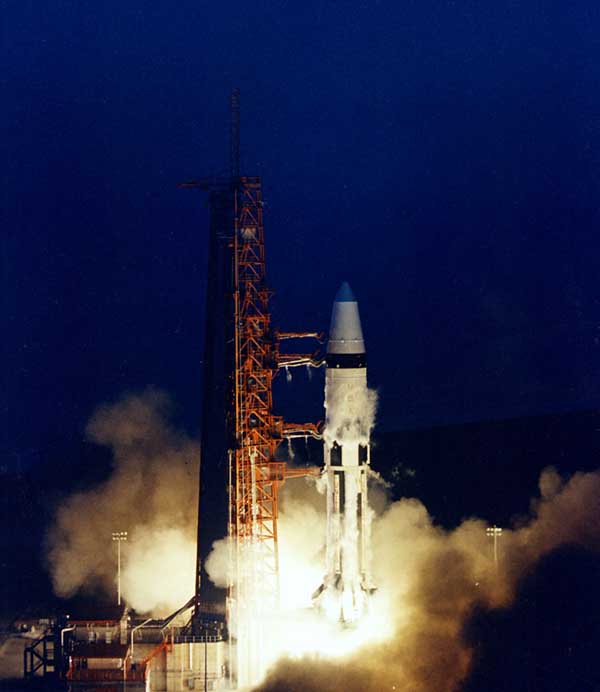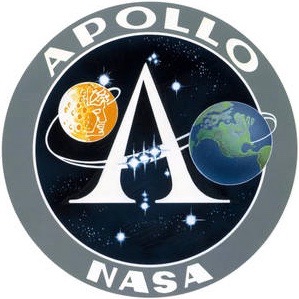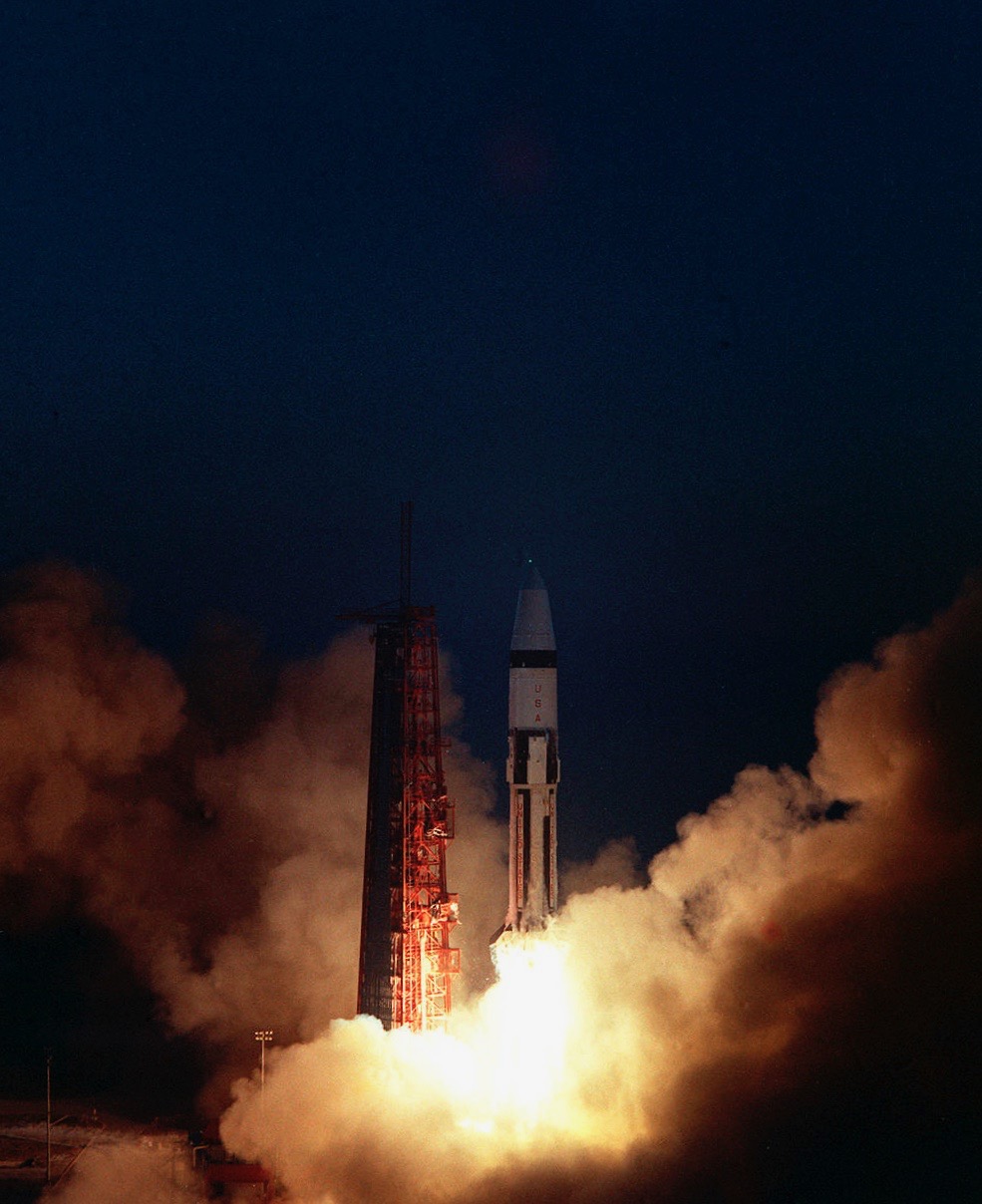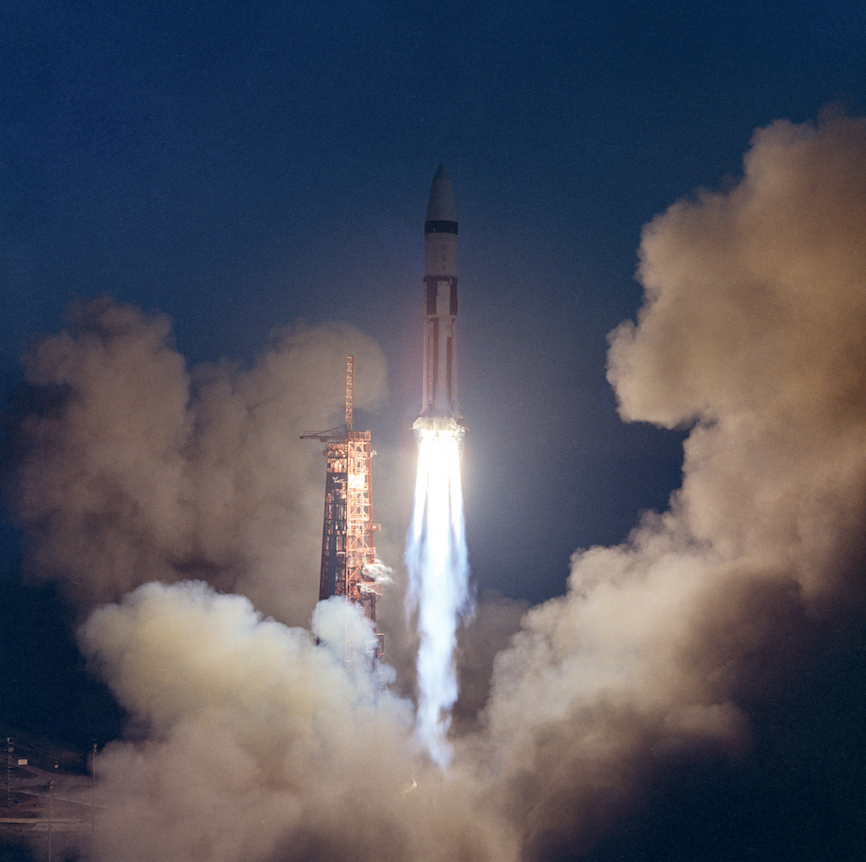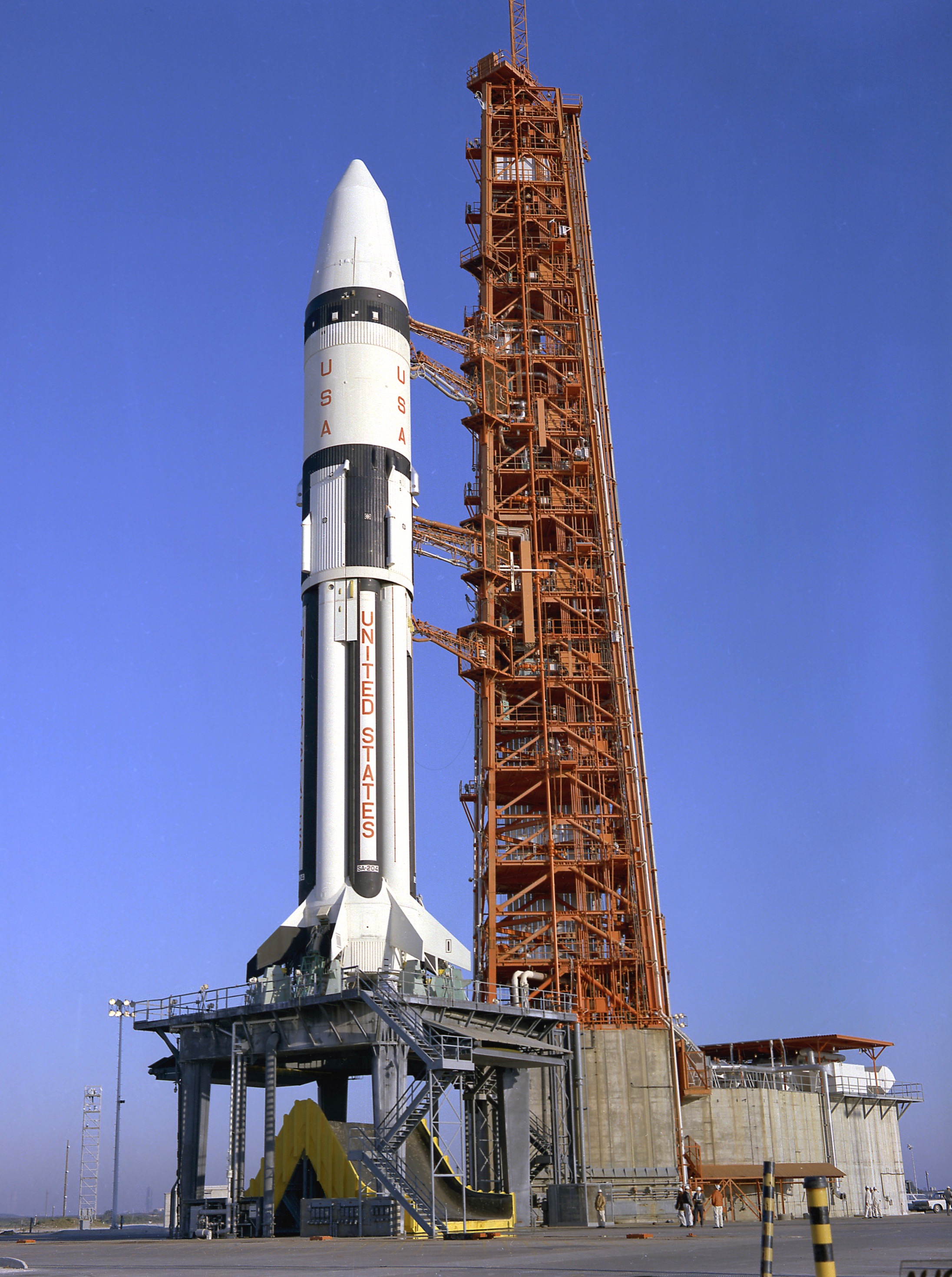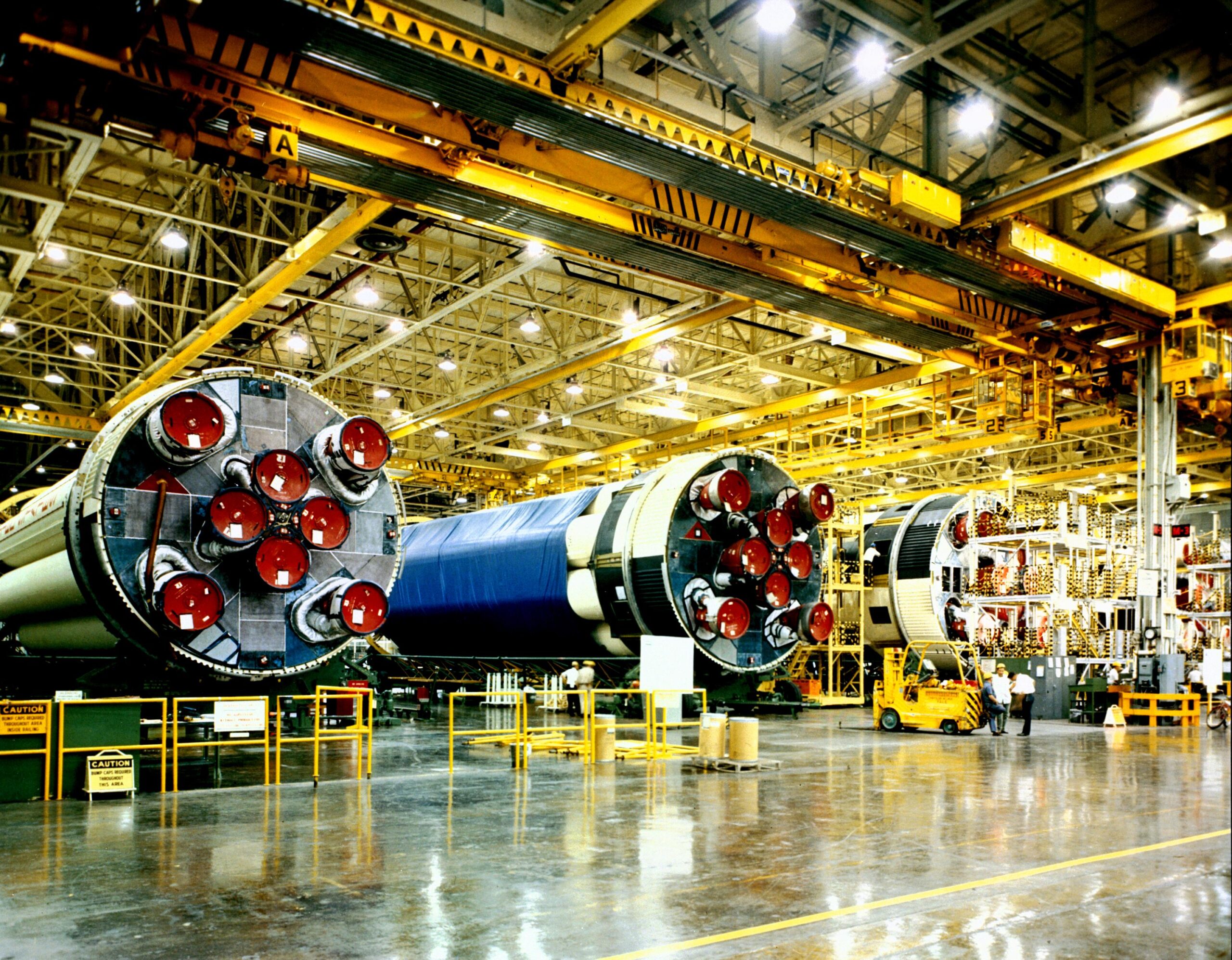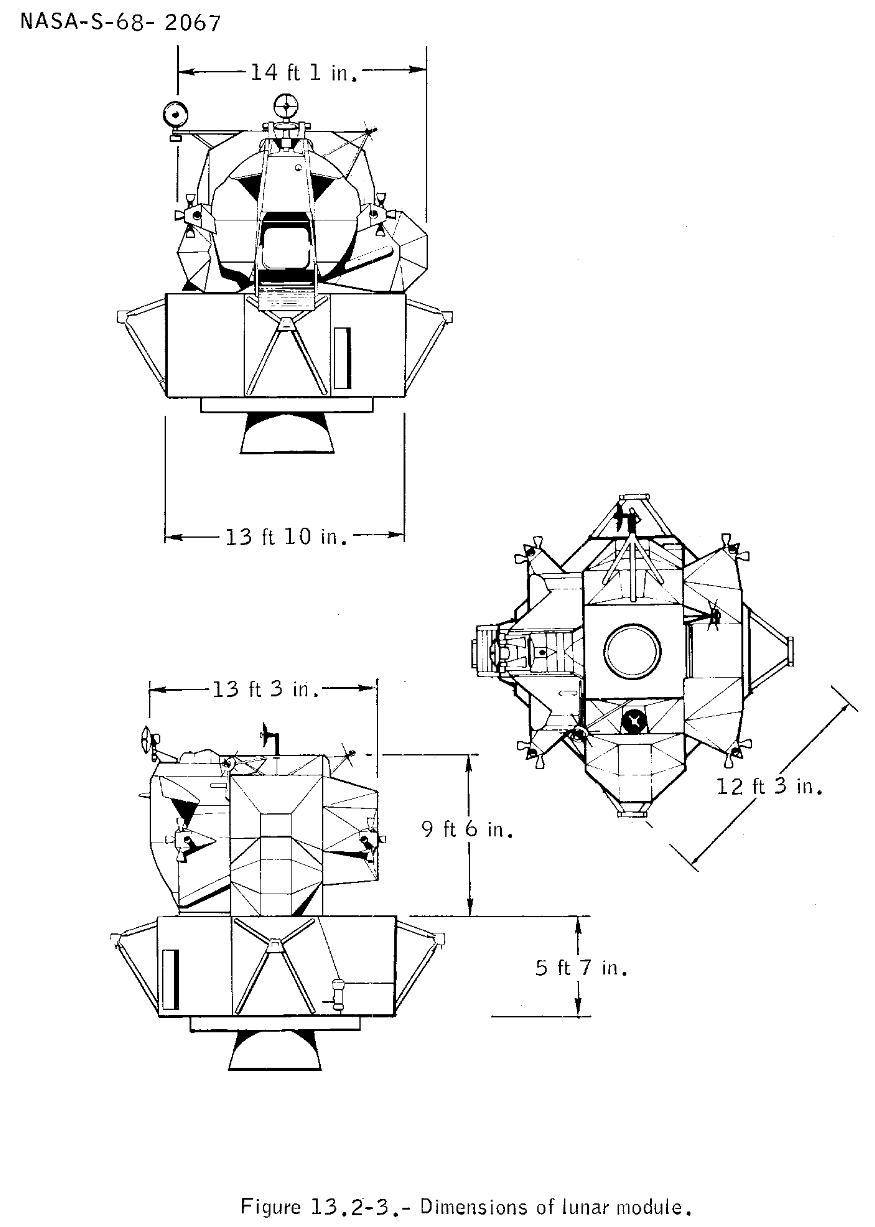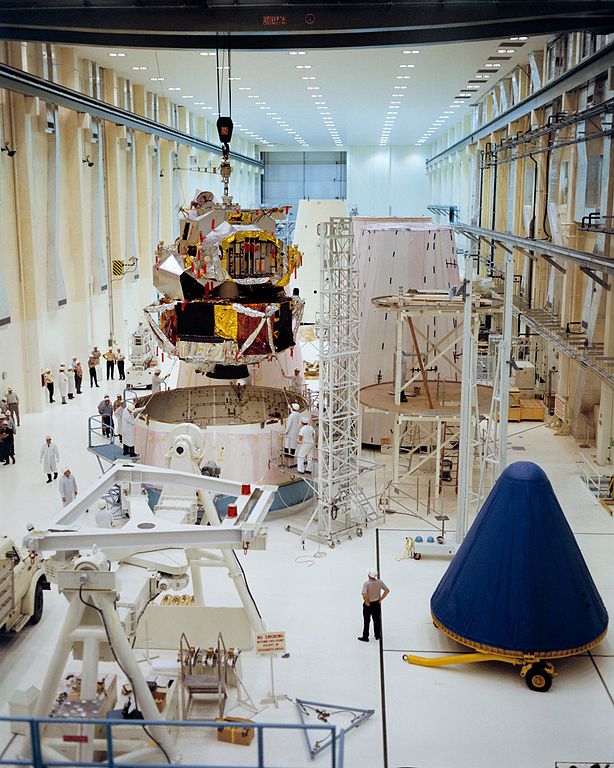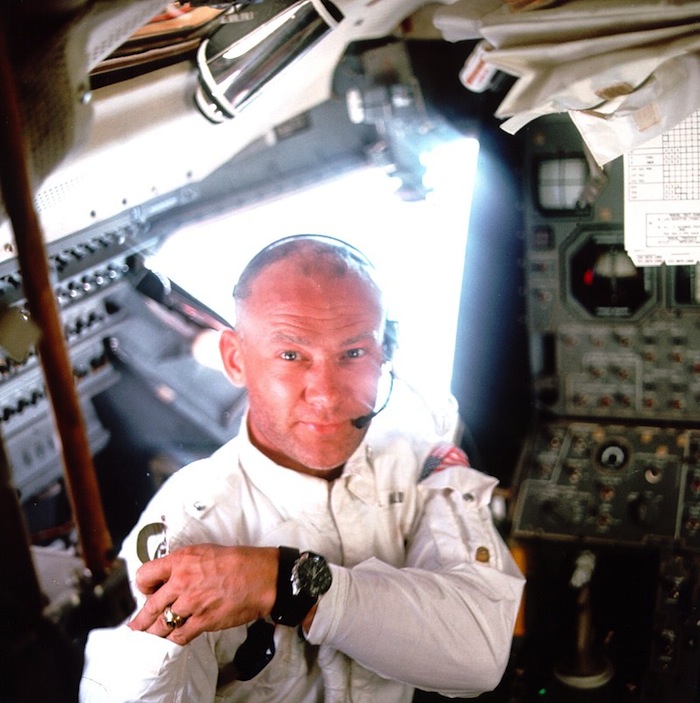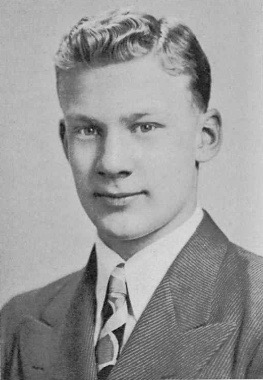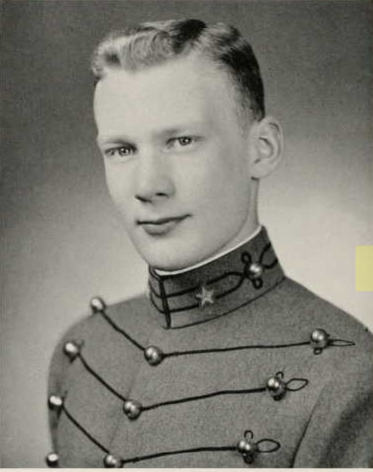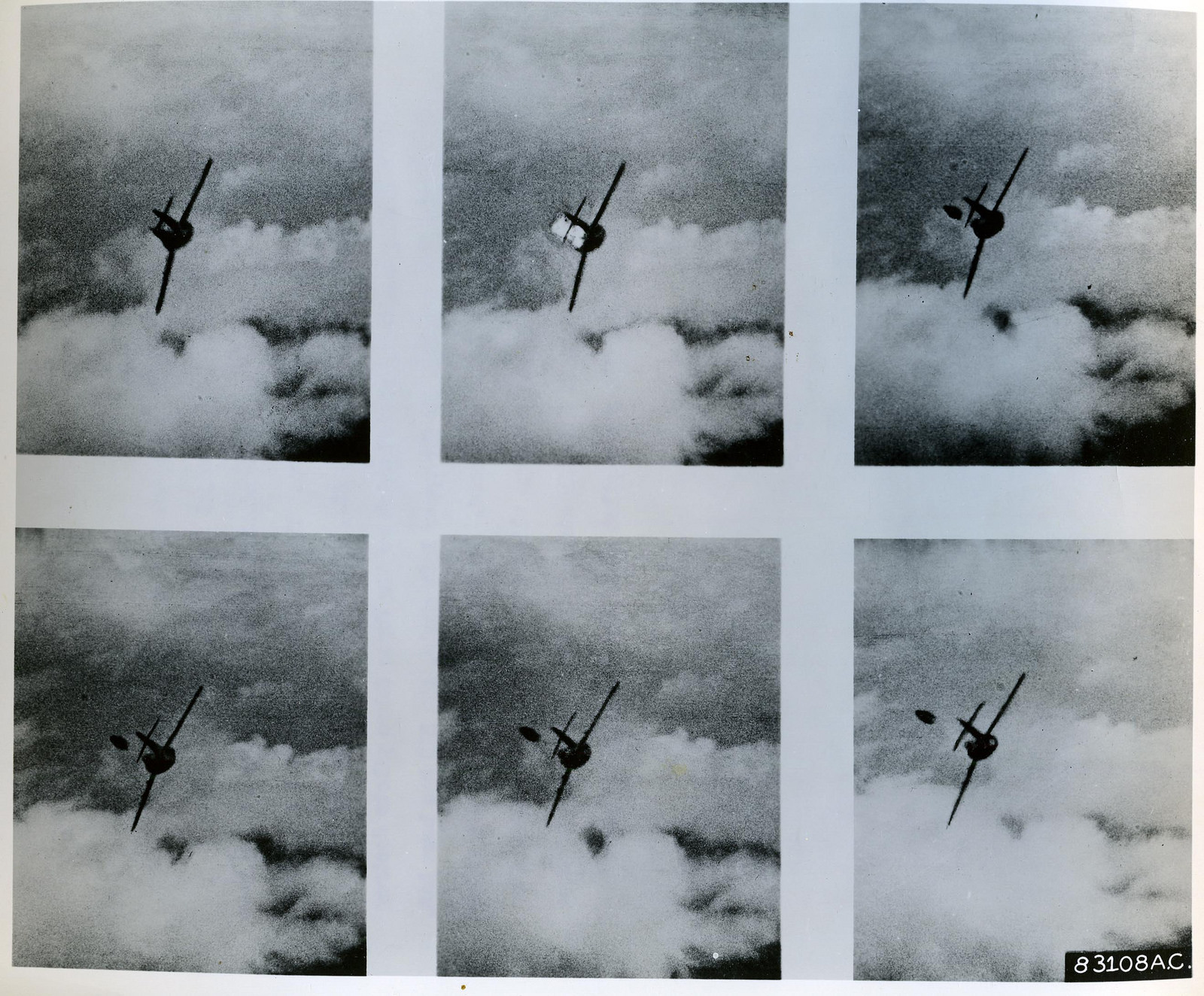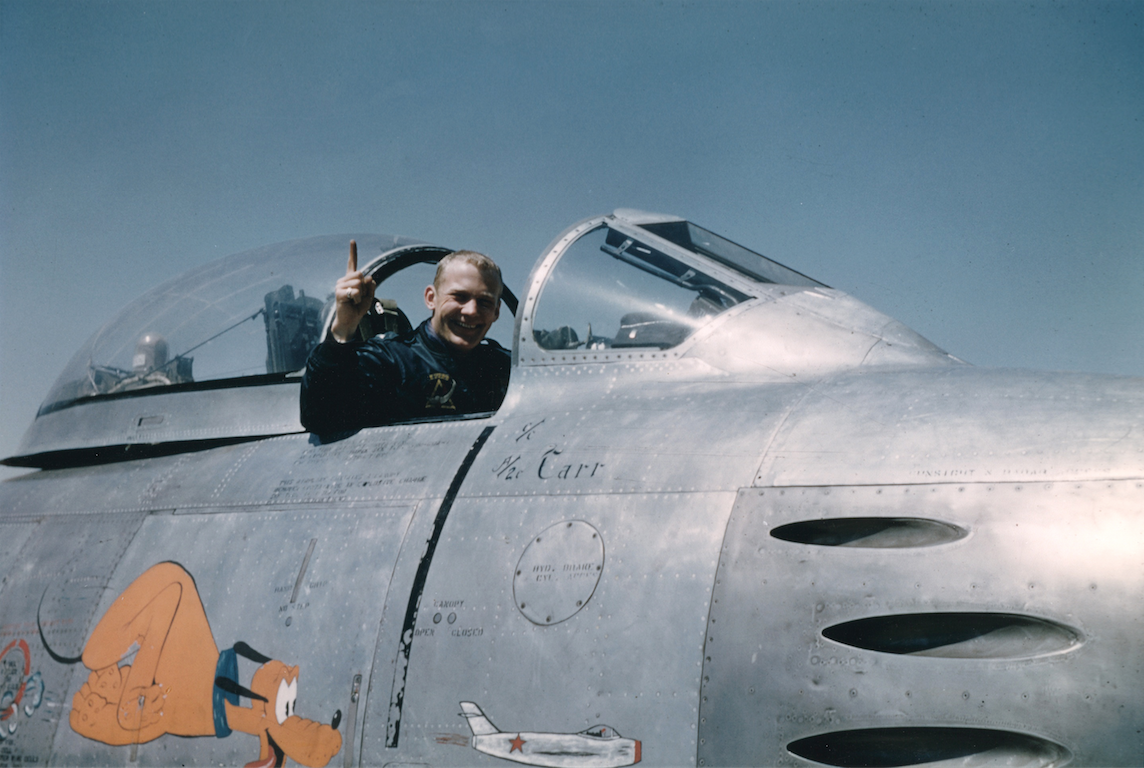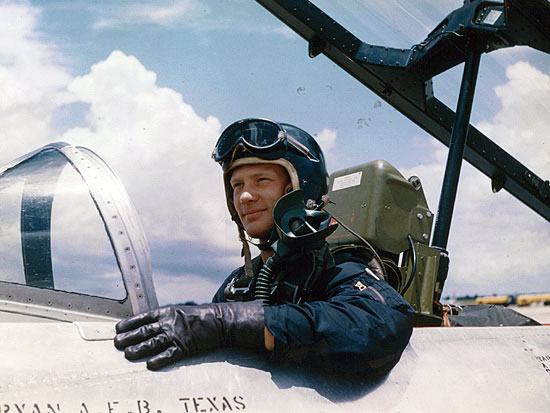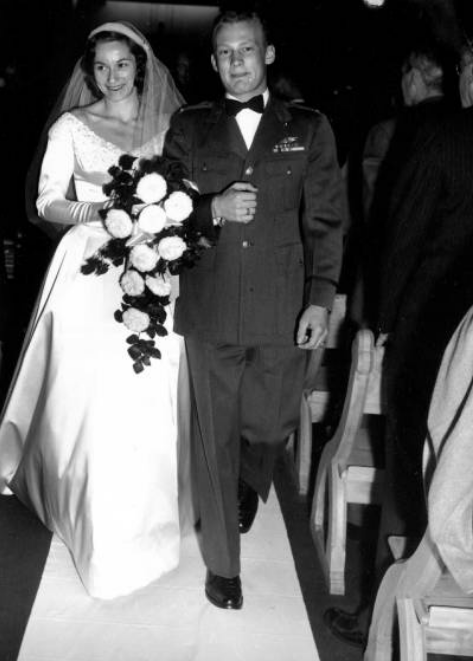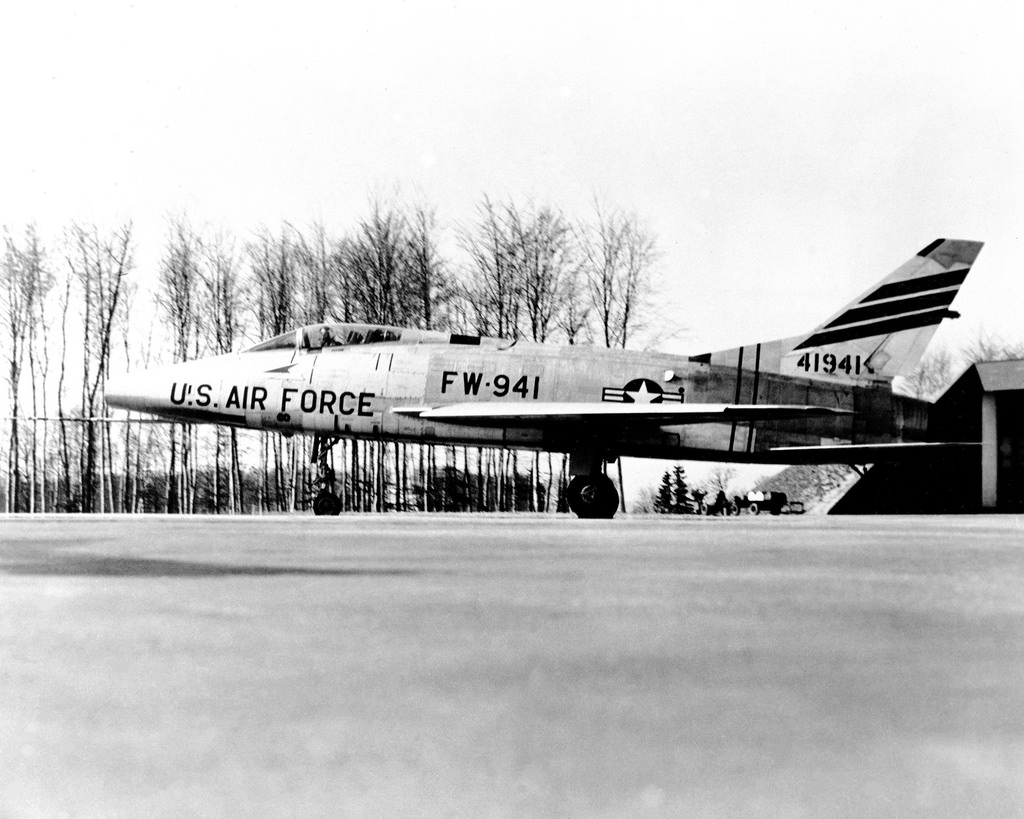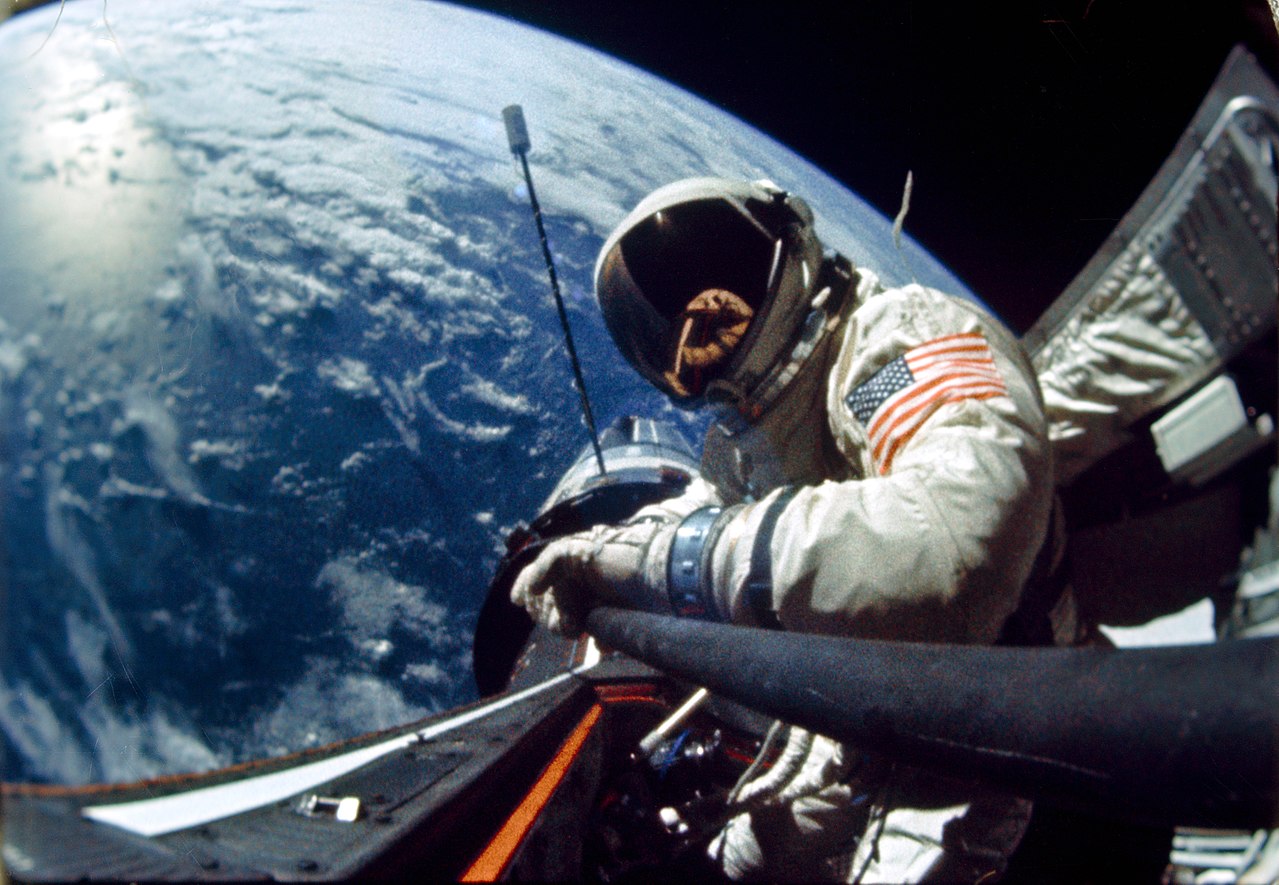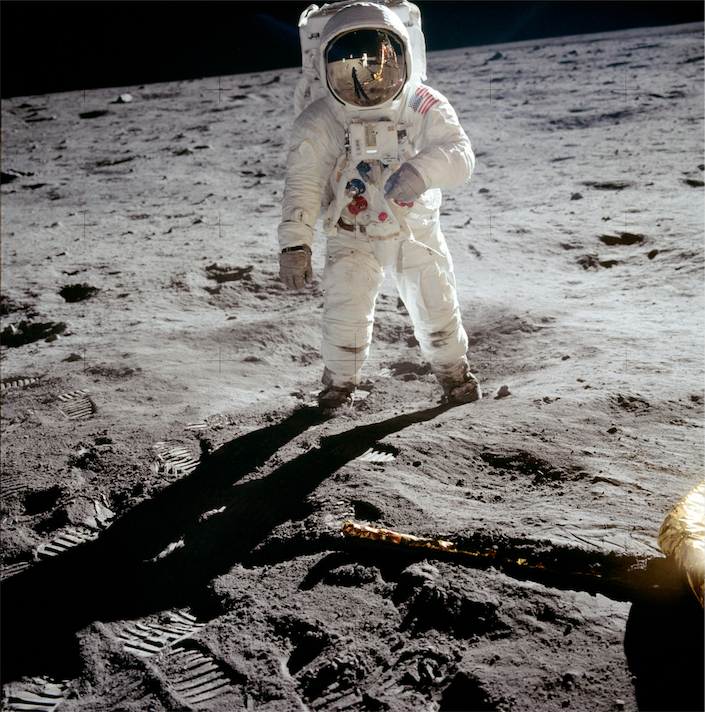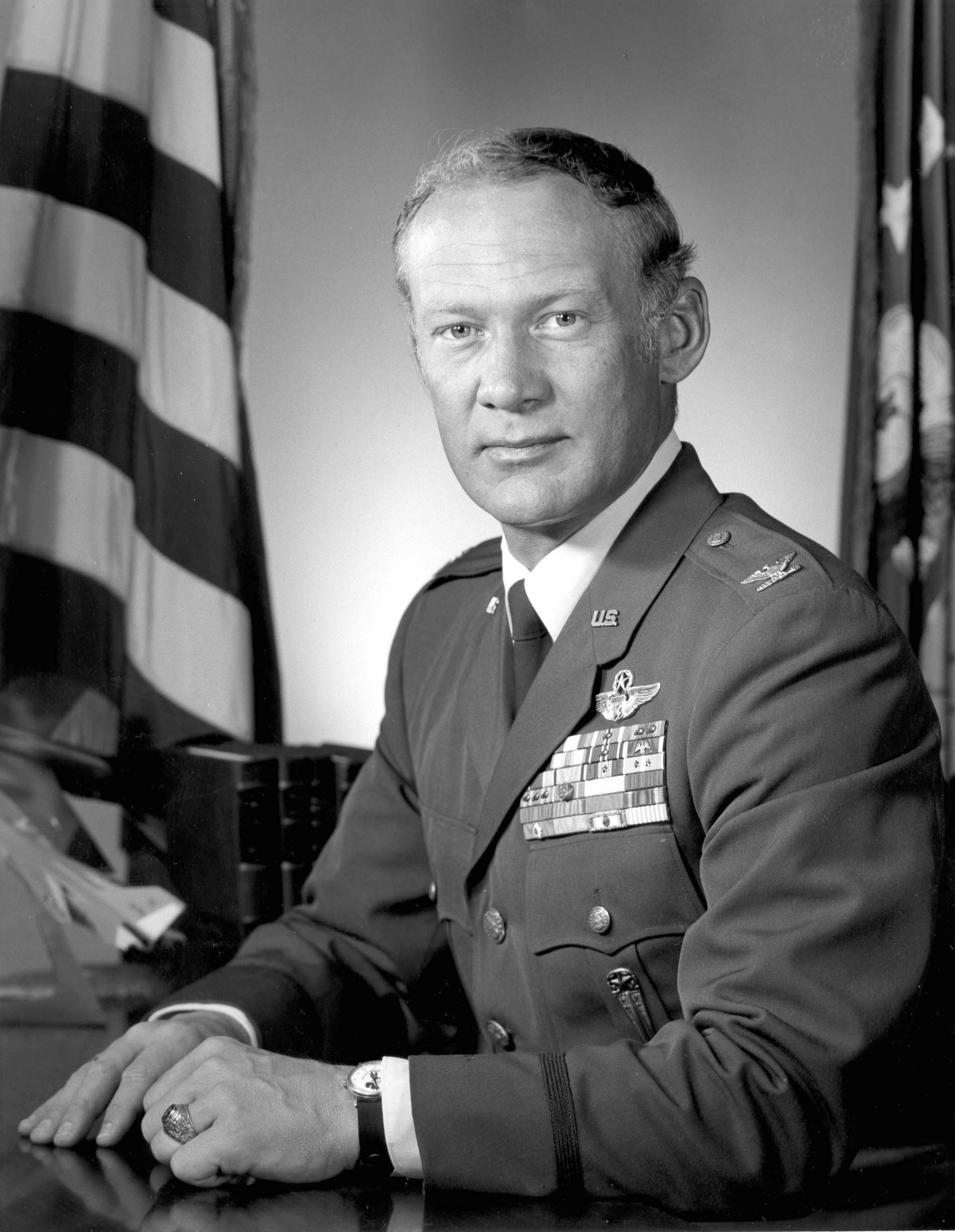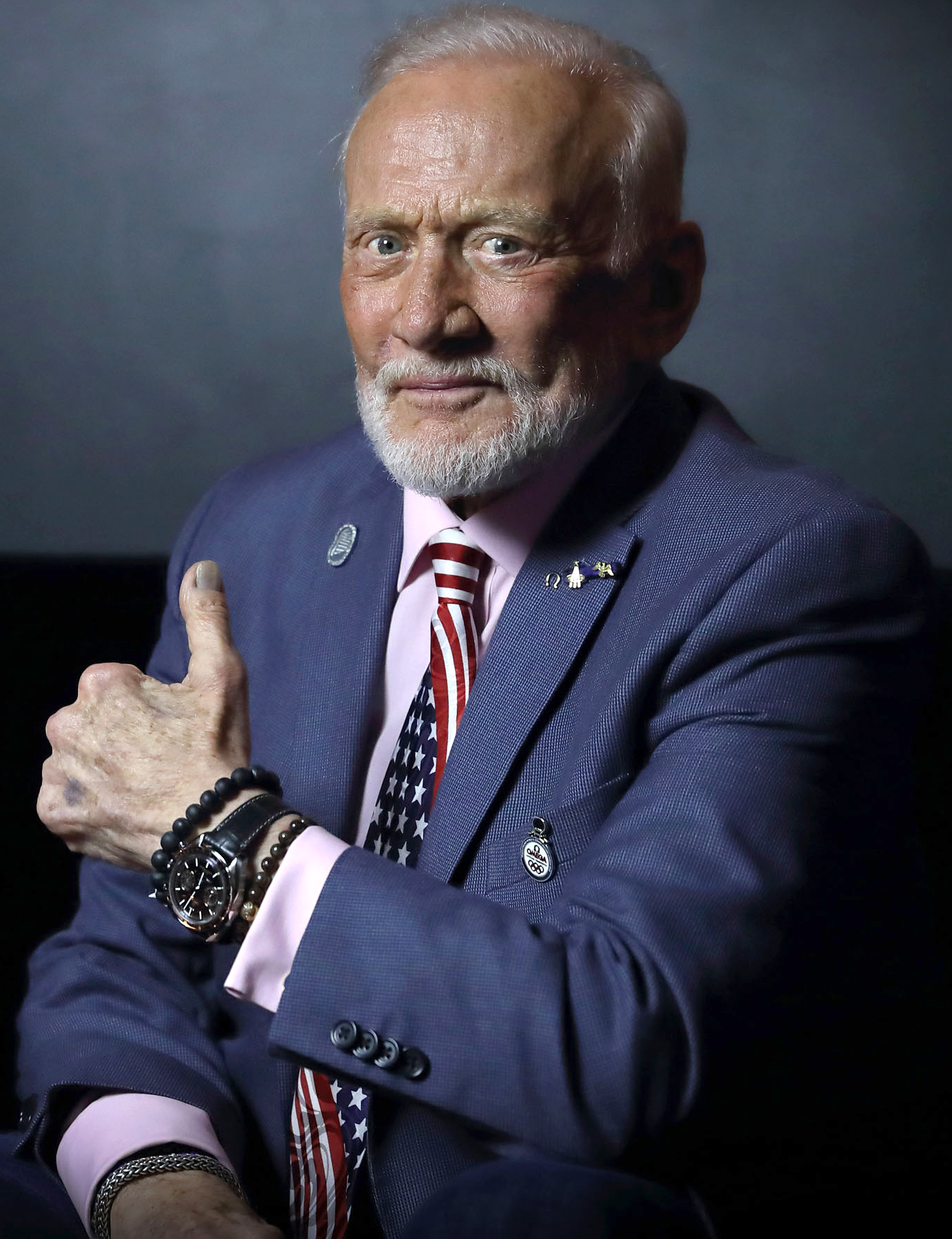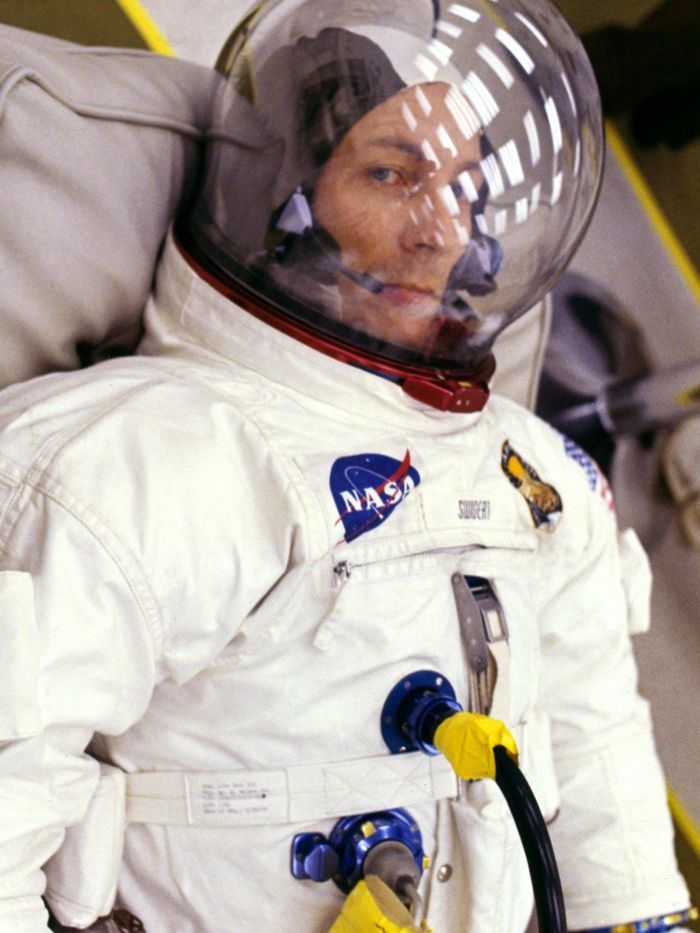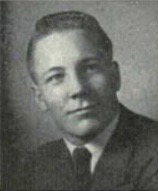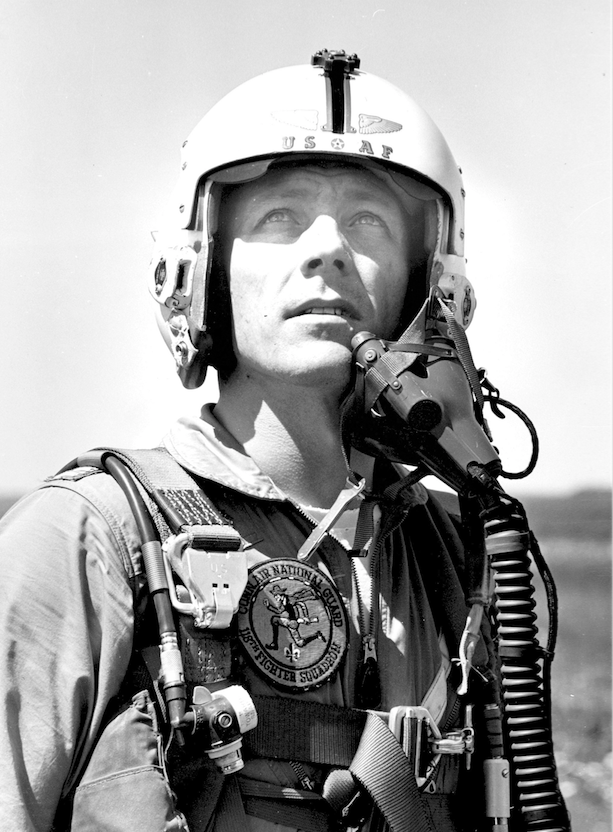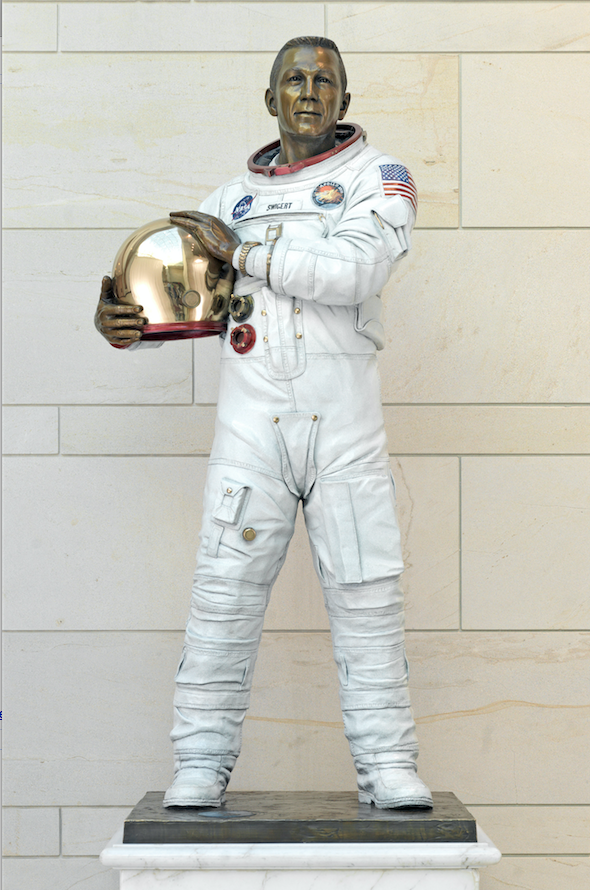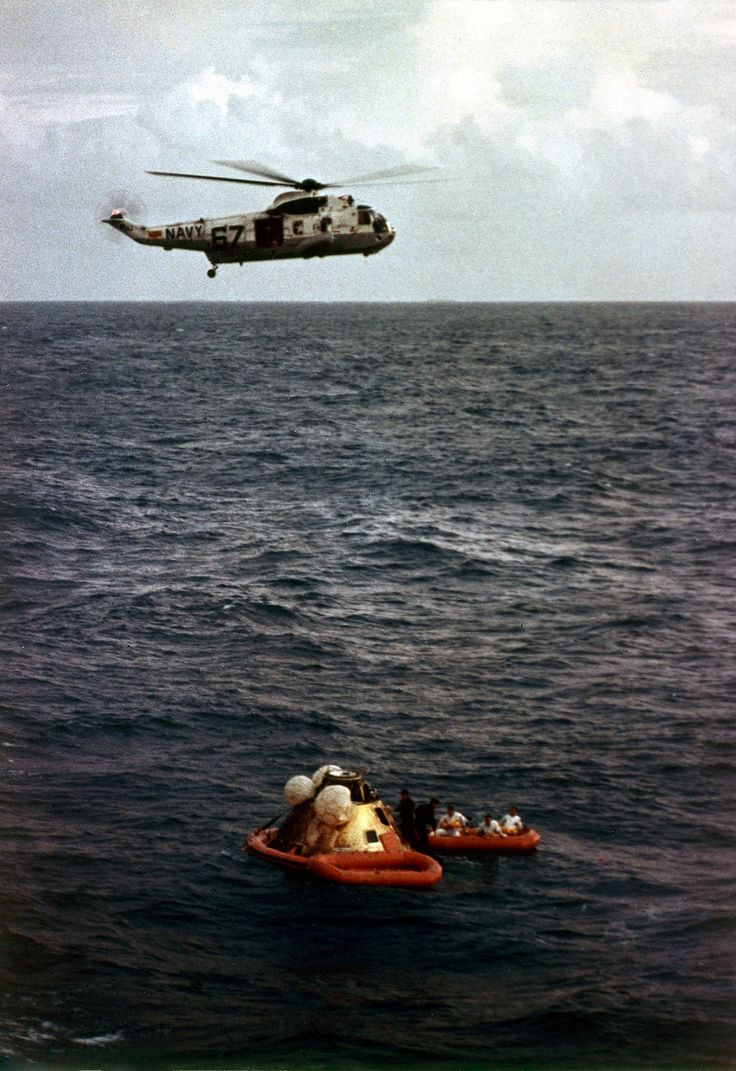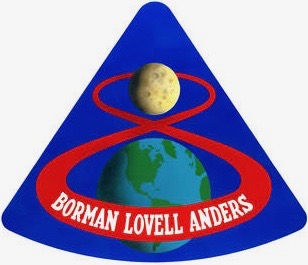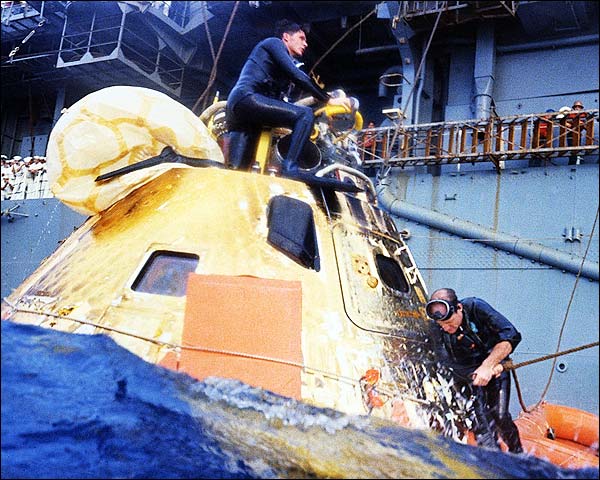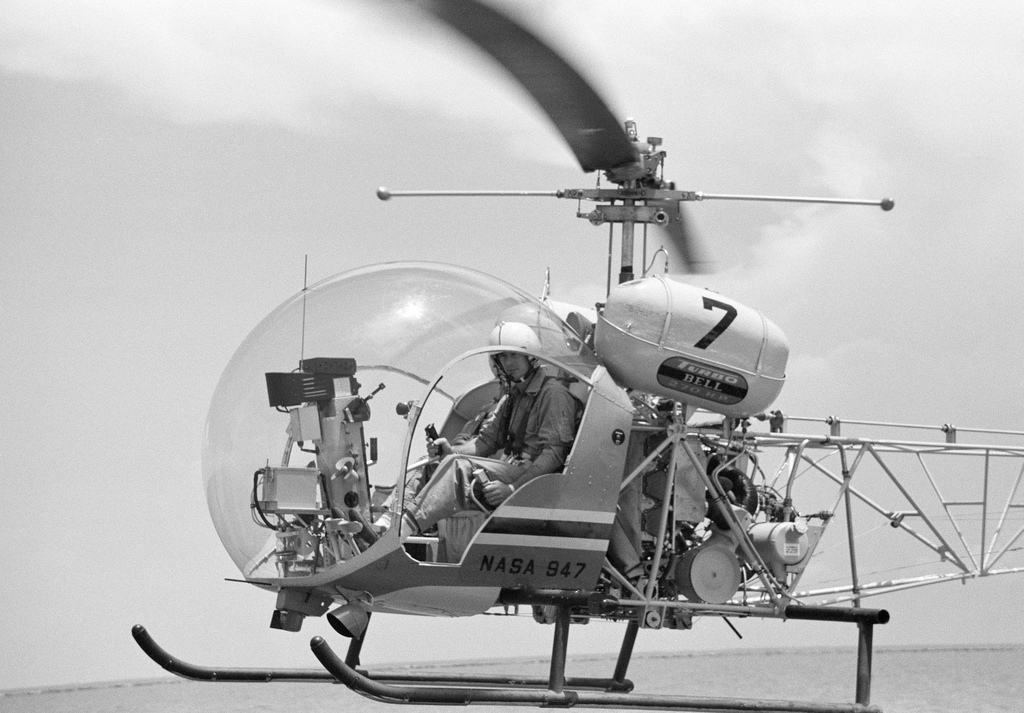
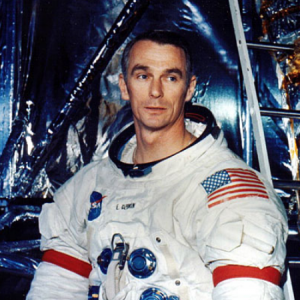
23 January 1971: NASA Astronaut Eugene Andrew (“Gene”) Cernan, backup commander for Apollo 14, was flying NASA 947, a 1967 Bell Model 47G-3B-1 helicopter, (N947NA, serial number 6665), on a proficiency flight. He intended to practice vertical approaches as a warmup for a lunar landing.
With full fuel tanks, NASA 947 was heavy. Cernan decided to burn off some fuel by flying along the Indian River before the vertical approaches:
“That gave me a reason to loaf around the sky for a while and invest the extra fuel in some fun flying.
“Small boats dotted the clear water below and bright islands mounded here and there on the river. Hardly a ripple disturbed the mirrorlike surface. After so many months of hard work and concentration, I couldn’t resist the temptation for a bit of mischief known among pilots as ‘flat-hatting.’ So I nosed over and swooped down from a couple of hundred feet to dance the chopper around island beaches and among the boaters, steadily getting closer to the surface. . .
“Without realizing the danger, I flew into a trap that was the plague of seaplane pilots. Without ripples, the water provided no depth perception and my eyes looked straight through the clear surface to the reflective river bottom. I had lost sight of the water. But I was in control, or at least I thought so. . . until the toe of my left skid dug into the Indian River.
“. . . I twisted the collective with my left hand and applied more power, pulling back on the controls, trying to get the machine to climb out of trouble. A plume of water erupted beneath the skid, then the canopy struck and a rushing tidal wave filled my vision as the helicopter lost any semblance of aerodynamic design. In a single flashing instant, it went from a speed of 100 knots to flat zero with a lurch as severe as any I had ever felt landing on an aircraft carrier or staging in a spacecraft. I crashed with a spectacular explosion.”
—The Last Man on the Moon, by Eugene Cernan and Don Davis, St. Martin’s Press, New York, 1999, at Page 258

The Bell 47 was torn apart by the impact. The cabin section, with Cernan still strapped inside, sank to the bottom of the river. As a Naval Aviator, he was trained in under water egress. He freed himself from the wreck and made his way to the surface. Gasoline from the ruptured fuel tanks was floating on the water and had caught fire. Cernan suffered some minor burns, but was otherwise unhurt. He was rescued by fishermen who were nearby.
The location of the crash was in the Indian River near Malabar, Florida.
An accident investigation board, led by Astronaut James A. Lovell, commander of Apollo 13, concluded that the accident was pilot error, in that Cernan had misjudged his altitude when flying over the water.
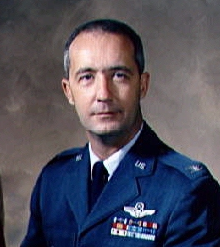
A week after the flight crew for Apollo 17 was announced, in a meeting with Dr. Robert R. (“Bob”) Bob Gilruth, Director of the Manned Spacecraft Center, and Christopher C. Kraft, Jr., Deputy Director of MSC and Director of Flight Operations, Colonel James Alton McDivitt, U.S. Air Force, NASA’s Manager of the Apollo Spacecraft Program (and who had commanded Gemini 4 and Apollo 9), insisted that Gene Cernan be grounded for poor judgement and not assigned as commander of Apollo 17.
Chris Kraft wrote:
“Why didn’t you ask me about this crew?” he [McDivitt] demanded. “Cernan’s not worthy of this assignment, he doesn’t deserve it, he’s not a very good pilot, he’s liable to screw everything up, and I don’t want him to fly.
I was shocked at how strongly Jim was reacting. “Why didn’t you ask me” he pleaded. “Why didn’t you ask me?” Then he shocked me further. “If you don’t get rid of him, I’ll quit.”
. . . I called McDivitt and told him that Cernan was staying. . .
“Thank you,” he said. “You’ll have my resignation shortly.”
— Flight: My Life in Mission Control, by Christopher C. Kraft and James L. Schefter, Dutton, New York, 2001, Chapter 23, at Pages 346 and 347
Gene Cernan, along with Ronald E. Evans and Harrison H. Schmitt, lifted off from the Kennedy Space Center aboard Apollo 17, 7 December 1972. On 11 December, he and Schmitt landed at the Taurus-Littrow Valley at the southeastern edge of Mare Serenitatis.
On 14 December 1972, Eugene Andrew Cernan was the last human to stand on the surface of The Moon.
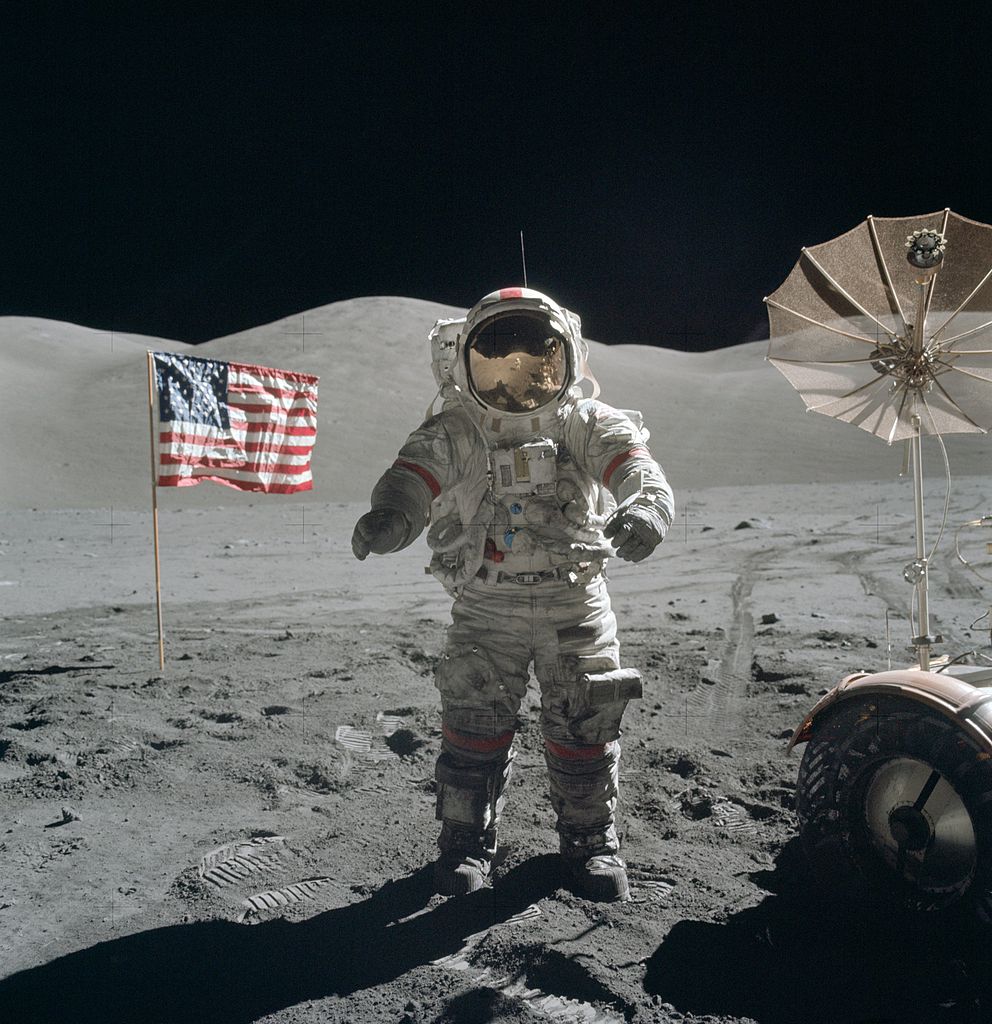
![]() The Bell Model 47, designed by Arthur M. Young of the Bell Aircraft Corporation, Buffalo, New York, was the first helicopter to receive civil certification from the Civil Aviation Administration, predecessor of the Federal Aviation Administration. On 8 March 1946, the aircraft received C.A.A. Type Certificate H-1.
The Bell Model 47, designed by Arthur M. Young of the Bell Aircraft Corporation, Buffalo, New York, was the first helicopter to receive civil certification from the Civil Aviation Administration, predecessor of the Federal Aviation Administration. On 8 March 1946, the aircraft received C.A.A. Type Certificate H-1.
The Bell 47G was the first helicopter manufactured by the Bell Aircraft Corporation at the company’s new plant at Fort Worth, Texas. It was also produced under license by Agusta, Kawasaki and Westland.
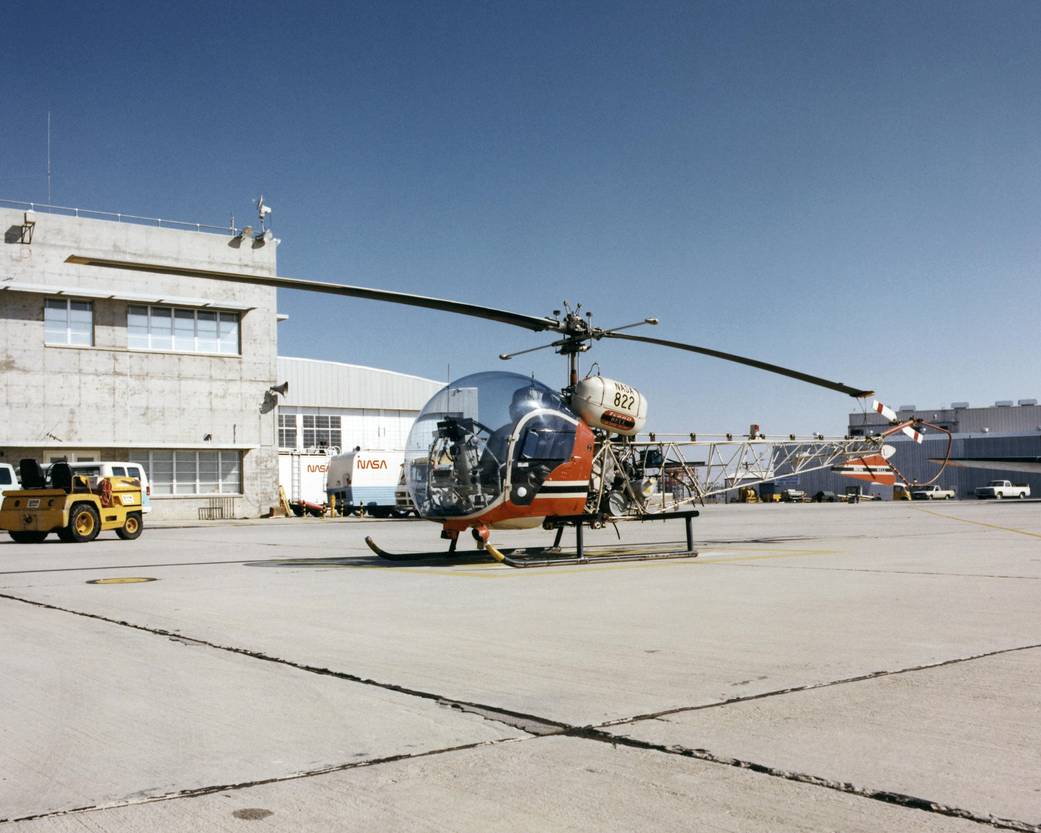
The Bell Model 47G-3B-1 was issued Type Certificate 2H-3 on 25 January 1963. It is a 3-place, single-engine light helicopter, operated by a single pilot. The helicopter has dual flight controls and can be flown from either the left or right. The airframe is constructed of a welded tubular steel framework with a sheet metal cockpit. The landing gear consists of two lateral, horizontal tubular cross tubes, and two longitudinal “skids,” curved upward at the front. Ground handling wheels can be attached to the skids. The most distinctive feature of the Bell 47 is the large plexiglass “bubble” canopy. The main rotor flight controls use a system of bell cranks and push-pull tubes. The cyclic and collective are hydraulically boosted. The tail rotor is controlled by pedals and stainless steel cables.
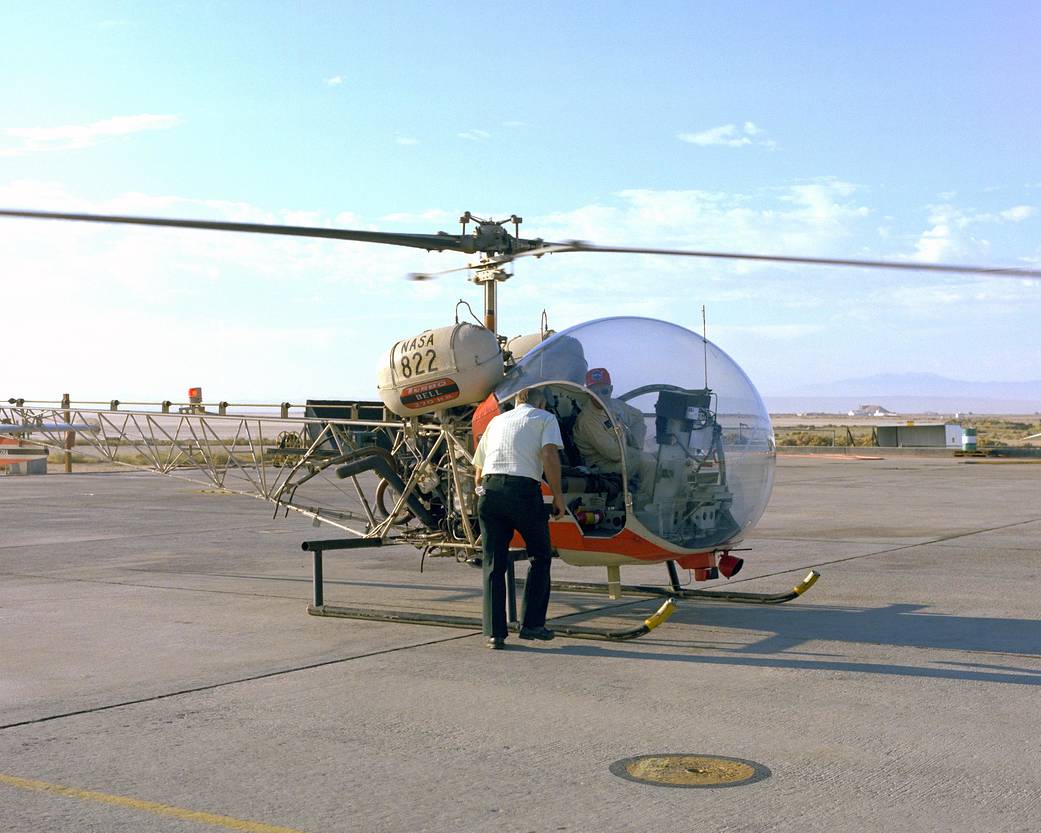
With rotors turning, the Bell 47G-3B-1 has an overall length of 43 feet, 5.55 inches (13.247 meters). From the forward tip of the skids to the aft end of the tail rotor guard, the fuselage is 32 feet, 7.40 inches long (9.942 meters). The main rotor has a diameter of 37 feet, 0.50 inches (11.290 meters). The tail rotor diameter is 5 feet, 10.1 inches (1.781 meters). Height to top of main rotor mast is 9 feet, 3.7 inches (2.837 meters).
The Bell 47G-3B-1 has an empty weight of approximately 1,820 pounds (826 kilograms), depending on installed equipment. Its maximum gross weight is 2,950 pounds (1,338 kilograms).
The main rotor, in common to all American-designed helicopters, rotates counter-clockwise as seen from above. (The advancing blade is on the helicopter’s right.) The anti-torque (tail) rotor is mounted to the right side of an angled tail boom extension, in a tractor configuration, and rotates counter-clockwise as seen from the helicopter’s left. (The advancing blade is above the axis of rotation.)
The main rotor is a two-bladed, under-slung, semi-rigid assembly that would be a characteristic of helicopters built by Bell for decades. The main rotor system incorporates a stabilizer bar, positioned below and at right angles to the main rotor blades. Teardrop-shaped weights are placed at each end of the bar, on 100-inch (2.540 meters) centers. The outside diameter of the stabilizer bar is 8 feet, 6.8 inches (2.611 meters). The pilot’s inputs to the cyclic stick are damped through a series of mechanical linkages and hydraulic dampers before arriving at the pitch horns on the rotor hub. The result is smoother, more stable flight, especially while at a hover. The stabilizer bar action is commonly explained as being “gyroscopic,” but this is incorrect. (A similar system is used on the larger Bell 204/205/212 helicopters.)
The Bell 47G-3B-1 used tip-weighted high-inertia metal main rotor blades. The airfoil is symmetrical, using the NACA 0015 profile. The operating range of the main rotor is 322–370 r.p.m.
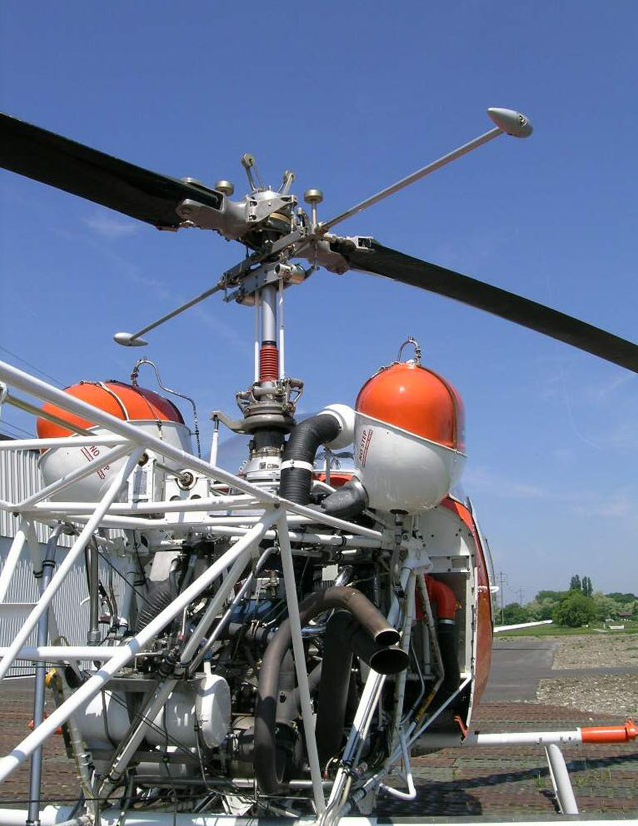
 The 47G-3B-1 used an AVCO Lycoming TVO-435-B1A, -B1B, -D1A, or -D1B engine. The TVO-435 is an air-cooled, turbosupercharged 433.976-cubic-inch-displacement (7.112 liter) vertically-opposed, six-cylinder overhead-valve engine with a compression ratio of 7.30:1. It is equipped with a Garrett AiResearch T-1108 turbosupercharger, which provides a constant manifold pressure with decreasing pressure altitude. The engine idles at 1,500 r.p.m. Its normal operating range is 3,000 to 3,200 r.p.m. (3,100–3,200 r.p.m., above 10,000 feet, or 3,048 meters). The TVO-435-B1 has a maximum continuous power rating of 220 horsepower at 3,200 r.p.m., with a manifold pressure of 27.5 inches Hg (0.931 Bar); and a maximum 270 horsepower at 3,200 r.p.m. at 32.8 inches Hg (1.111 Bar) (-B1) or 32.0 inches (1.084 Bar) (-D1) at Sea Level, for takeoff (5-minute limit).
The 47G-3B-1 used an AVCO Lycoming TVO-435-B1A, -B1B, -D1A, or -D1B engine. The TVO-435 is an air-cooled, turbosupercharged 433.976-cubic-inch-displacement (7.112 liter) vertically-opposed, six-cylinder overhead-valve engine with a compression ratio of 7.30:1. It is equipped with a Garrett AiResearch T-1108 turbosupercharger, which provides a constant manifold pressure with decreasing pressure altitude. The engine idles at 1,500 r.p.m. Its normal operating range is 3,000 to 3,200 r.p.m. (3,100–3,200 r.p.m., above 10,000 feet, or 3,048 meters). The TVO-435-B1 has a maximum continuous power rating of 220 horsepower at 3,200 r.p.m., with a manifold pressure of 27.5 inches Hg (0.931 Bar); and a maximum 270 horsepower at 3,200 r.p.m. at 32.8 inches Hg (1.111 Bar) (-B1) or 32.0 inches (1.084 Bar) (-D1) at Sea Level, for takeoff (5-minute limit).
The TVO-435 is 34.73 Inches (0.882 meters) high, 33.58 inches (0.878 meters) wide and 24.13 inches (0.613 meters) deep, and weighs 464.00 pounds (178.26 kilograms) to 481.00 pounds (182.89 kilograms), depending of the specific engine variant.
Engine torque is sent through a centrifugal clutch to a gear-reduction transmission, which drives the main rotor through a two-stage planetary gear system. The transmission also drives the tail rotor drive shaft, and through a vee-belt/pulley system, a large fan on the forward face of the engine to provide cooling air.
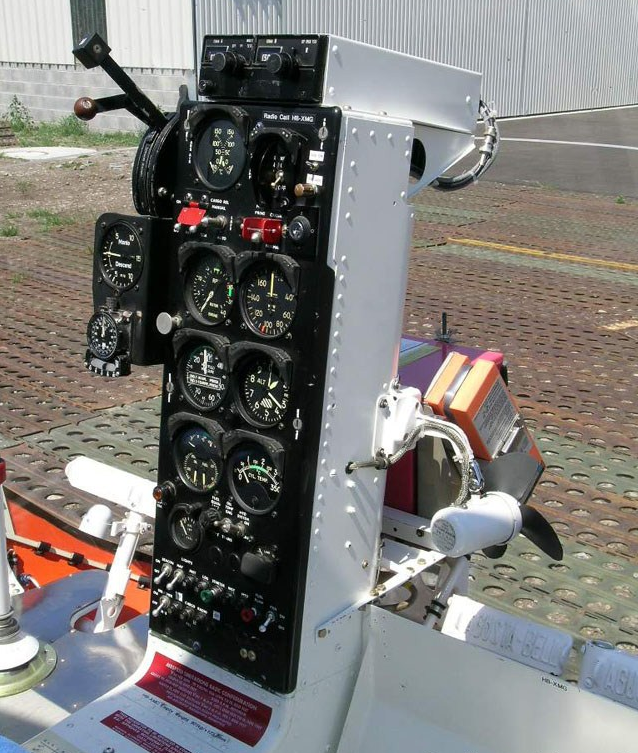
The Bell 47G-3B1 has a maximum cruise speed of 80 miles per hour (129 kilometers per hour) from 1,000 to 4,500 feet (305–1,372 meters). This decreases to 70 miles per hour up to 10,000 feet (3,048 meters), and 50–60 miles per hour (80–97 kilometers per hour) up to 15,000 feet (4,572 meters). The helicopter’s maximum speed (VNE) is 105 miles per hour (169 kilometers per hour) from Sea Level to 4,500 feet (1,372 meters). Above that altitude, VNE is reduced 7 miles per hour (11.3 kilometers per hour) for every 1,000 foot (305 meters) increase in altitude. Above 15,000 feet, the VNE continues to decrease at 5 miles per hour (8 kilometers per hour) per 1,000 feet (305 meters).
The Bell 47G-3B-1 demonstrated the ability to over in ground effect (HIGE) at a gross weight of 2,850 pounds (1,293 kilograms) at the summit of Pike’s Peak, 14,115 feet (4,302 meters), in the Rocky Mountains of Colorado. The Density Altitude was approximately 15,000 feet (4,572 meters). At the same gross weight, it hovered out of ground effect (HOGE) at 9,000 feet (2,743 meters), Density Altitude. The helicopter has a maximum altitude limitation of 20,000 feet (6,096 meters).
Fuel is carried in two gravity-feed tanks, mounted above and on each side of the engine. The total fuel capacity is 61.6 gallons (233.2 liters), however, usable fuel is 57 gallons (216 liters). The helicopter has a maximum range of 273 miles (441 kilometers).
In production from 1946 until 1974, more than 7,000 Model 47 helicopters were built, worldwide. Production of the Model 47G-3B-1 began in March 1962 and a total of 337 of were built. The initial sales price was $46,950 (equivalent to $436,325 in 2022 dollars). NASA bought two -G-3B-1s in 1967. Another 415 were built for military customers, designated TH-13T.
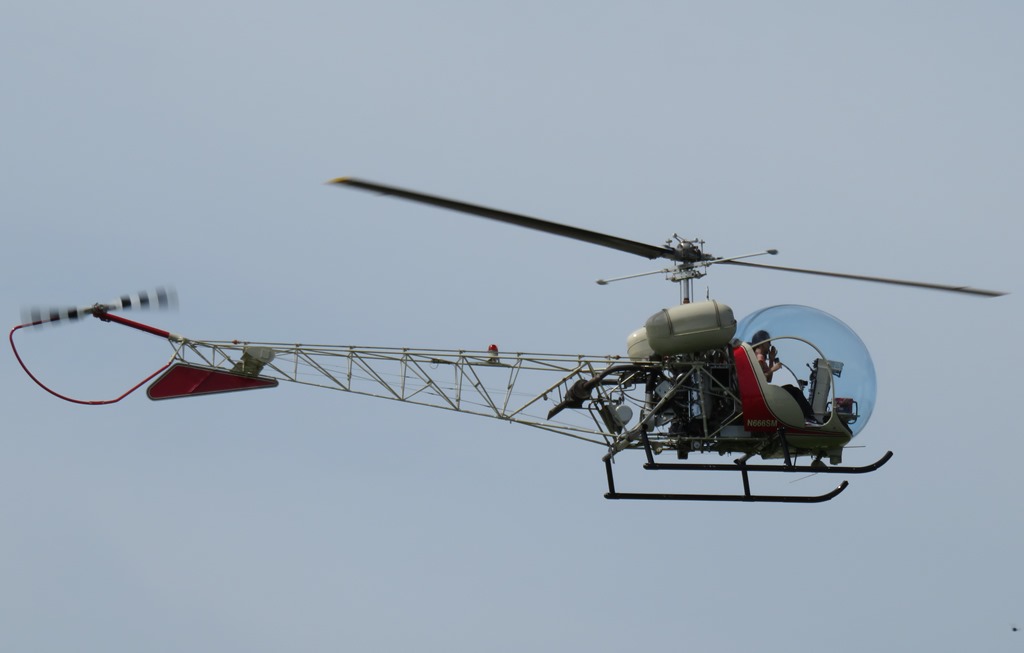
In 2010, the type certificates for all Bell 47 models were transferred to Scott’s Helicopter Service, Le Sueur, Minnesota, which continues to manufacture parts and complete helicopters.
© 2018, Bryan R. Swopes
